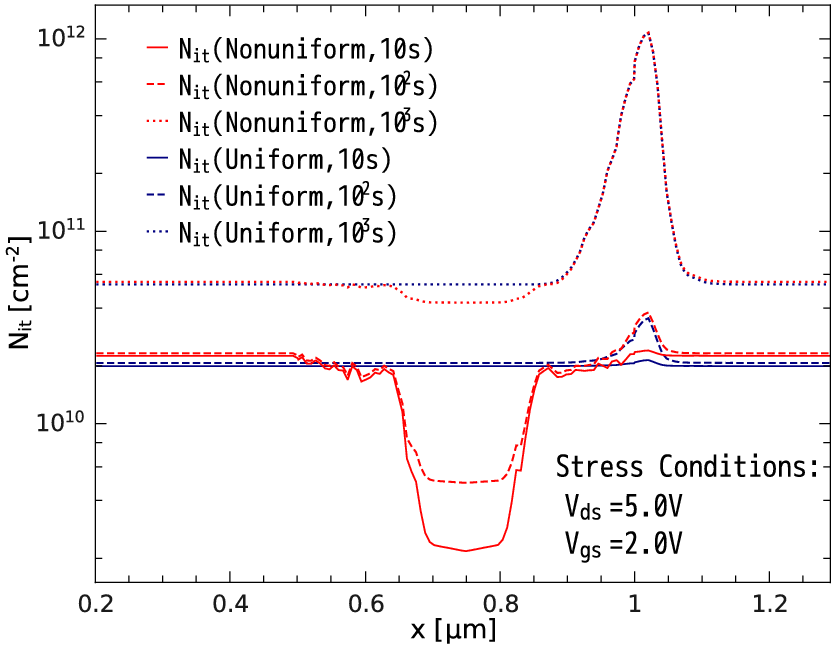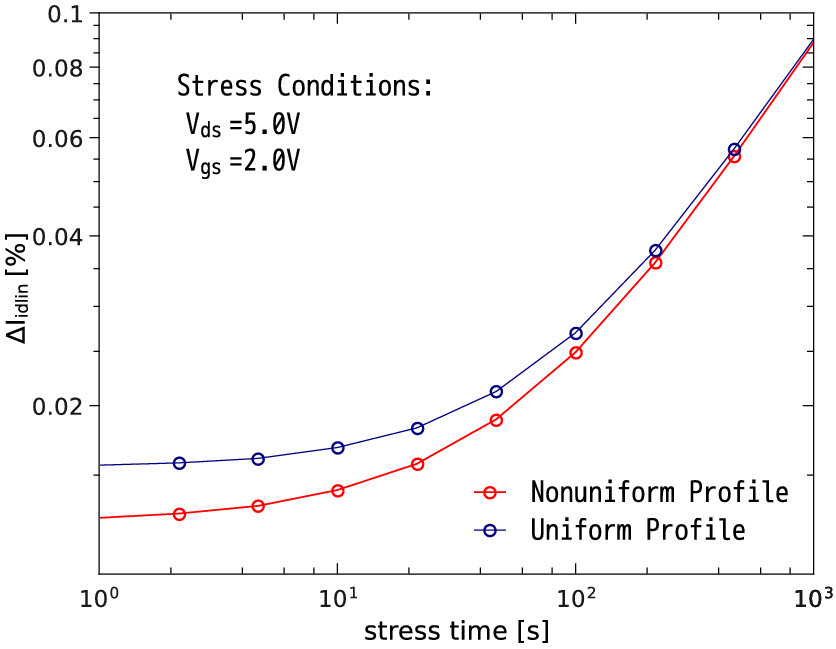Next: 4.3 Charge-Pumping Extraction Techniques Up: 4.2 Interface State Profile of Unstressed Device Previous: 4.2.2 Interface State Profile of an Unstressed Device
(a) (b)
(b)
|
The information on the initial interface state profile is significant in the context of hot-carrier degradation modeling. The impact of the initial Nit distribution on the degraded device characteristics within the developed physics-based model of HCD (see Section 3.1) is examined. The proposed approach considers the interplay between the single- and multiple-carrier mechanisms of Si-H bond-breakage. The bond is interpreted as a truncated harmonic oscillator with the corresponding ladder of eigenstates. All oscillator transitions are considered within a system of rate equations. The solution of the system relies on the initial conditions, that is the initial concentration of the virgin Si-H bonds. If some of these bonds are already pre-broken, the density of bonds available to be ruptured is reduced. Therefore, the pre-existing dangling bonds already impact the characteristics of the fresh device which differ from those typical for an ideal transistor (with pre-stressed Nit = 0) of the same configuration. Due to this initial interface state density profile the solution of the rate equation system - i.e. Nit(x,t) - is modified.
Figure 4.9a (obtained for stress Vds = 5.0V and Vgs = 2.0V) illustrates this tendency, showing the evolution of the interface state profile with stress time, calculated by considering the uniform and the nonuniform initial Nit distributions. The lack of details obtained from the uniform Nit approach is apparent. It can be seen that the difference is more pronounced at short stress times because at longer times the total Nit is already rather high, thereby screening the impact of the pre-stressed Nit dose. This tendency is confirmed by Figure 4.9b which demonstrates that the linear drain current change (calculated using real and uniform Nit(x,t) profiles) is significantly modified for stress times shorter than 102s. This trend means that an initial interface trap density can affect the device behavior only in the case of short stress times and relatively weak stresses. The second demand corresponds only to the case of real device operating conditions when the applied voltages are relatively low, compared to accelerated hot-carrier stresses.